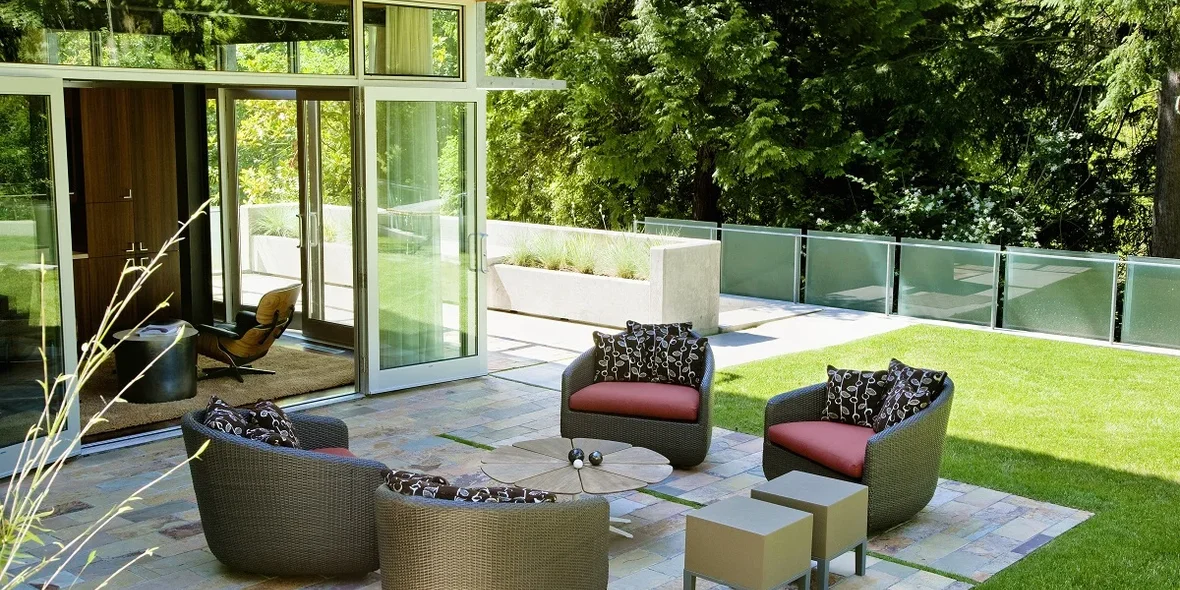
What is a Patio And How is It Used in Architecture?
Patio courtyard — is an architectural element that represents an open or enclosed space, usually located inside a building. Patios are often used in private homes and public buildings, serving as outdoor recreation areas, creating green spaces, and organizing spaces for social interaction.
The term itself comes from the Spanish word patio, which translates as «yard» or «backyard.» Patios are widely used in the architectural traditions of countries with warm climates, but this element is also used in other regions in both urban and suburban architecture.
Architectural features of the patio:
- Open space. Patios are typically open courtyards surrounded by building walls or fences. They may sometimes be covered to provide protection from the sun, but are often left unroofed to allow maximum access to fresh air.
- Central location. In many homes, the patio is located in the center of the building, similar to ancient peristyles, which provides convenient access from different rooms and promotes natural ventilation and light.
- Landscape design. An important feature of the patio is the use of greenery and decorative elements such as fountains and sculptures, which makes the space not only functional but also aesthetically attractive. Plants add a cozy atmosphere and visually enrich the yard.
- Use of natural materials. Patios are often created using durable and visually appealing materials such as stone, terracotta, brick, or tile. These materials provide durability and hold up well to the elements.
Today, patios are an integral part of residential and commercial architecture, especially in warm climates such as Spain, Italy, Greece, and Latin America. However, they can also be found in cooler climates, where patios are successfully integrated into modern architectural solutions that take into account local characteristics.








